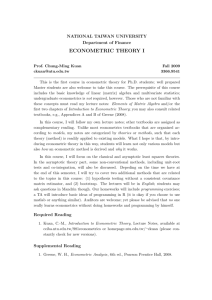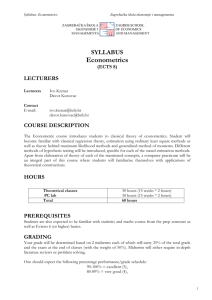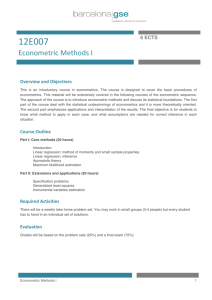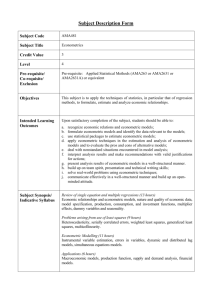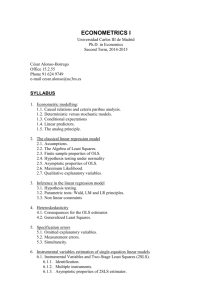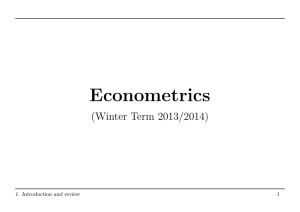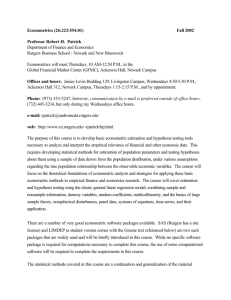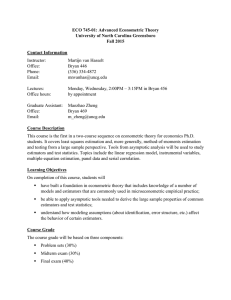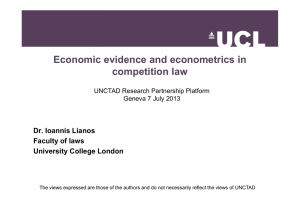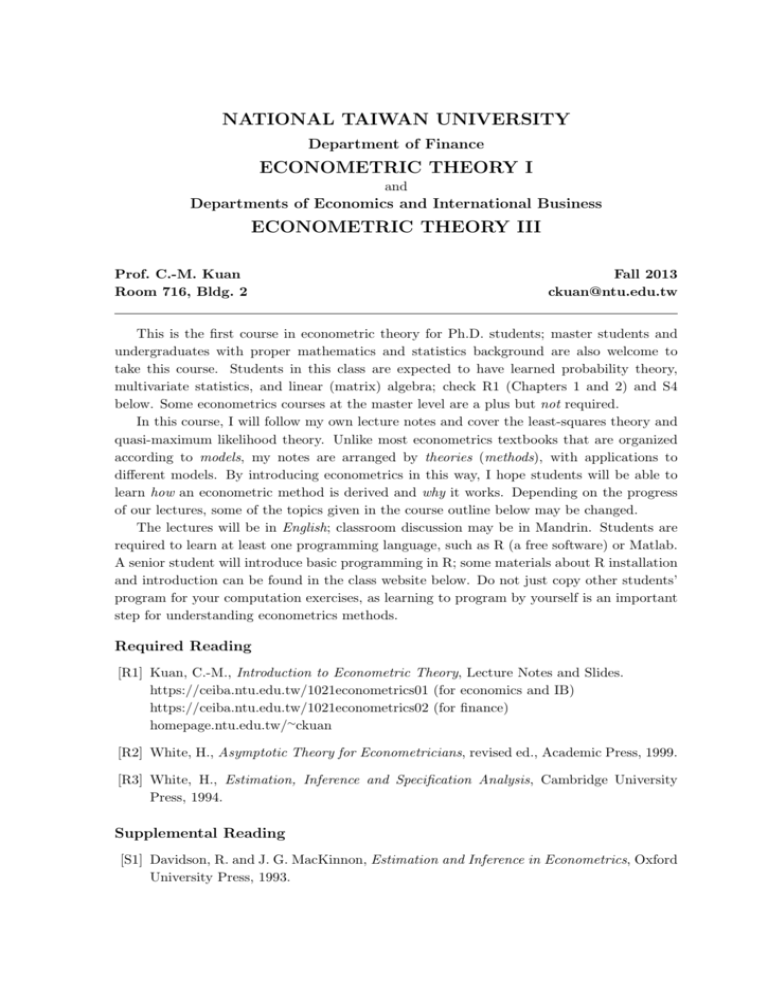
NATIONAL TAIWAN UNIVERSITY
Department of Finance
ECONOMETRIC THEORY I
and
Departments of Economics and International Business
ECONOMETRIC THEORY III
Prof. C.-M. Kuan
Room 716, Bldg. 2
Fall 2013
ckuan@ntu.edu.tw
This is the first course in econometric theory for Ph.D. students; master students and
undergraduates with proper mathematics and statistics background are also welcome to
take this course. Students in this class are expected to have learned probability theory,
multivariate statistics, and linear (matrix) algebra; check R1 (Chapters 1 and 2) and S4
below. Some econometrics courses at the master level are a plus but not required.
In this course, I will follow my own lecture notes and cover the least-squares theory and
quasi-maximum likelihood theory. Unlike most econometrics textbooks that are organized
according to models, my notes are arranged by theories (methods), with applications to
different models. By introducing econometrics in this way, I hope students will be able to
learn how an econometric method is derived and why it works. Depending on the progress
of our lectures, some of the topics given in the course outline below may be changed.
The lectures will be in English; classroom discussion may be in Mandrin. Students are
required to learn at least one programming language, such as R (a free software) or Matlab.
A senior student will introduce basic programming in R; some materials about R installation
and introduction can be found in the class website below. Do not just copy other students’
program for your computation exercises, as learning to program by yourself is an important
step for understanding econometrics methods.
Required Reading
[R1] Kuan, C.-M., Introduction to Econometric Theory, Lecture Notes and Slides.
https://ceiba.ntu.edu.tw/1021econometrics01 (for economics and IB)
https://ceiba.ntu.edu.tw/1021econometrics02 (for finance)
homepage.ntu.edu.tw/∼ckuan
[R2] White, H., Asymptotic Theory for Econometricians, revised ed., Academic Press, 1999.
[R3] White, H., Estimation, Inference and Specification Analysis, Cambridge University
Press, 1994.
Supplemental Reading
[S1] Davidson, R. and J. G. MacKinnon, Estimation and Inference in Econometrics, Oxford
University Press, 1993.
[S2] Greene, W. H., Econometric Analysis, 6th ed., Pearson Prentice Hall, 2008.
[S3] Hamilton, J., Time Series Analysis, Princeton University Press, 1994.
[S4] Kuan, C.-M., Elements of Matrix Algebra, Lecture Notes.
Office Hours: By appointment (3366.1072 or e-mail)
Course Outline
Part I: Classical Least Squares Theory (Chapters 3–4 of R1; S2; S4)
I.1 The Method of Ordinary Least Squares (OLS)
I.2 Properties of the OLS Estimator
I.3 Hypothesis Testing
I.4 Limitation of the Classical Conditions
I.5 The Method of Generalized Least Squares (GLS)
Part II: Asymptotic Least Squares Theory (Chapters 5–7 of R1; R2; R3; S1)
II.1 Elements of Probability Theory
II.2 Asymptotic Properties of the OLS Estimator
II.3 Consistent Estimation of Asymptotic Covariance Matrix
II.4 Large Sample Tests
II.5 Digression: Bootstrap
Part III: Nonlinear Least Squares (NLS) Theory (Chapter 8 of R1; S1)
III.1 Nonlinear Specifications
III.2 NLS Estimator
Part IV: Quasi-Maximum Likelihood (QML) Theory (Chapters 9–10 of R1; R3; S3)
IV.1 Kullback-Leibler Information Criterion
IV.2 Asymptotic Properties of the QML Estimator
IV.3 Information Matrix Equality
IV.4 Large Sample Tests – Nested Models
IV.5 Large Sample Tests – Non-Nested Models
IV.6 Applications: Microeconometric models
IV.7 Applications: ARMA Models
IV.8 Applications: Volatility Models
Grading: One midterm (40%), one final (45%), Homework (15%).
2

